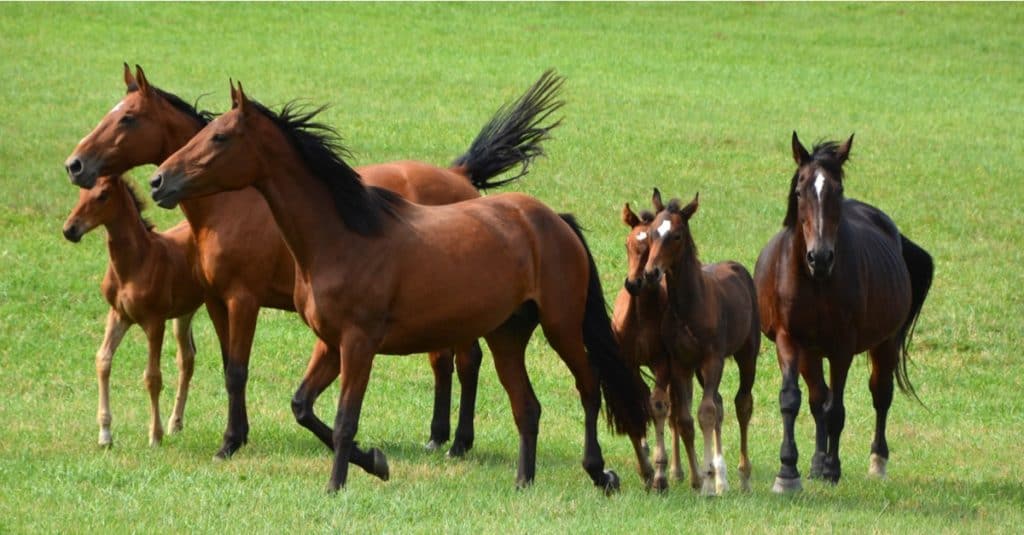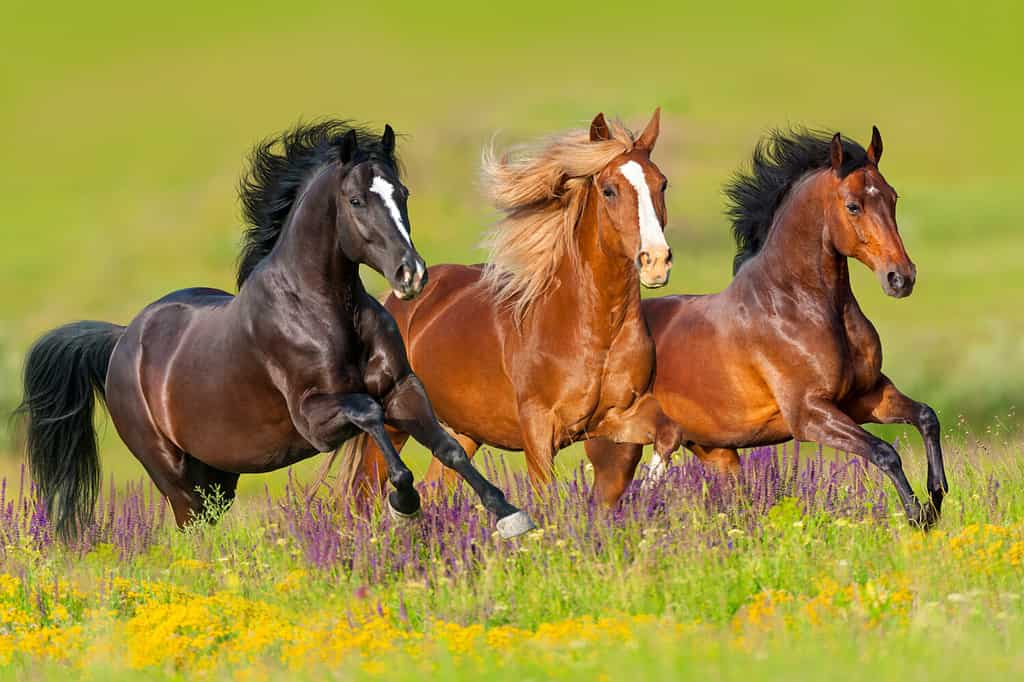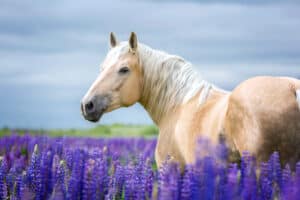They don’t just hang out together in random groups. Horses are intentional with their social structure, minding their respective roles. Young male and female horses stay alongside their parents but later venture off at different times. But what is a group of horses called? Let’s find out! Plus, learn more about their social behavior, including who leads each group.
What Is a Group of Horses Called?
A group of horses is most frequently called a herd. However, there are a few other terms that may be used in certain regions. For example, when a group of horses is owned and kept together, they are called a string. When there’s a male horse kept specifically for breeding purposes, it is called a stud. However, the term stud can also be used if there’s a group of male horses kept together for the same purpose of breeding. In the wild, a mature breeding male keeps a more contained group of mature breeding females and their offspring. This is called a harem.

Horses form groups called herds. Within each herd, there are mature male and females as well as their offspring.
©meunierd/Shutterstock.com
Why Do Horses Form Groups?
Emily Plemons, Owner of Crepe Myrtle Acres Horseback Riding in Angier, NC, told A-Z-Animals, “Horses thrive in groups for many reasons. First and foremost, for safety. Horses are prey animals, and when in groups they feel safer. Horses are very rarely seen alone in the wild. In the wild, a herd is led by one stallion and typically two “lead mares” who lead the rest of the herd to food and water. There is always a ‘pecking order’ with herds of horses whether in the wild or a pasture.”
She continued to explain, “The alpha males and females will tend to show some sort of aggression (not always physical — it can be so much as just pinning ears and a mean look) to get the submissive horses to back down. Horses also tend to get more sleep when in herds. Typically, when a horse lays down to sleep one or more horses will “stand guard” while the horse is asleep, and they take turns. If you have horses in a pasture and they all lay down together it’s because they feel no threat and they feel comfortable in their environment. Some farms will have donkeys to watch over the herds. Donkeys are great protection for horses.”

In some farms, donkeys are kept alongside horses to watch over the herds.
©DragoNika/Shutterstock.com
Horse Social Behavior
Horses have a specific social structure. In the wild, they form herds comprised of either one or two stallions along with several mares and their foals. The mature breeding male or stallion stands atop the social hierarchy as the owner of the herd. However, it’s the alpha mare who leads the group. As Plemons explained, there may be more than one alpha mare. The alpha mare is typically the eldest of the group but despite being older and often weaker, she keeps her role as the leader based on the knowledge acquired through her various experiences throughout life. She’s the one who is best equipped to lead the herd.
While the alpha mare(s) leads the herd, the stallion focuses on protection and reproduction. A stallion may keep a harem as small as two, but he may also go into the double digits, with a harem of 20 or more. The harem may include up to eight mature breeding females and the rest of the group includes their offspring. Eventually, the colts mature enough to go off on their own to form what’s called a bachelor herd. Female offspring, also called fillies, operate a bit differently. They may remain with their original herd for longer but when an available stallion comes along, they may go off with him to form a new herd.

Male horses without a herd of their own form bachelor herds. Females remain with their original herds until a bachelor stallion wins them over.
©Kwadrat/Shutterstock.com
Eventually, a stallion gets too old to keep his herd. This creates an opportunity for one of the males that has been part of a bachelor herd. On average, stallions own their herd for about two years. However, they may be able to maintain ownership of their herd for up to 10 years! Within their herds, all horses use a range of sounds to communicate. Some sounds are low and subtle while others are loud, meant to travel long distances for the benefit of all herd members. As much as they can demonstrate surprise, excitement, and aggression, they can also communicate affection and friendship.
The photo featured at the top of this post is © Christy berry/Shutterstock.com
Thank you for reading! Have some feedback for us? Contact the AZ Animals editorial team.






